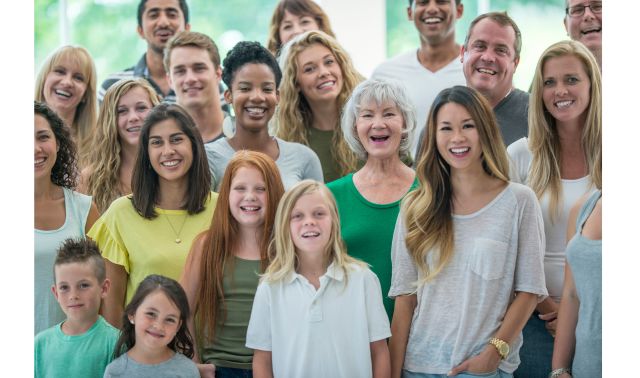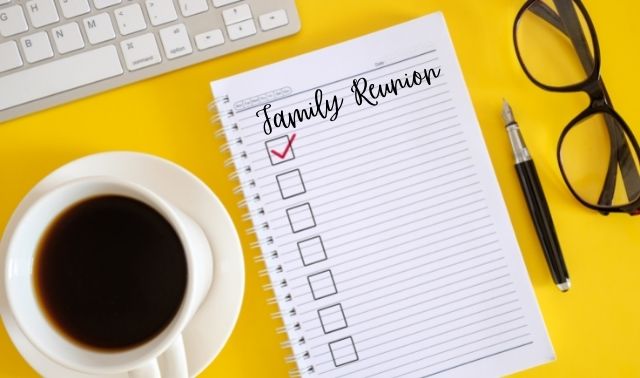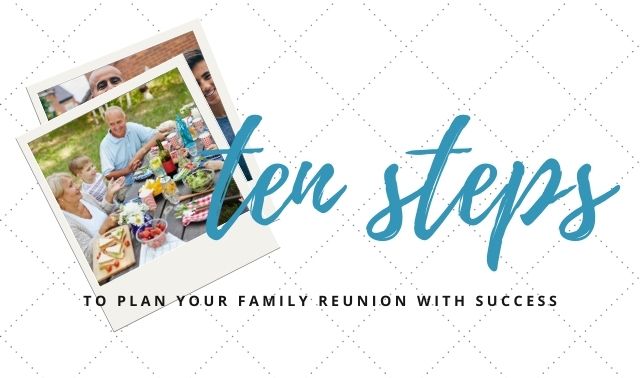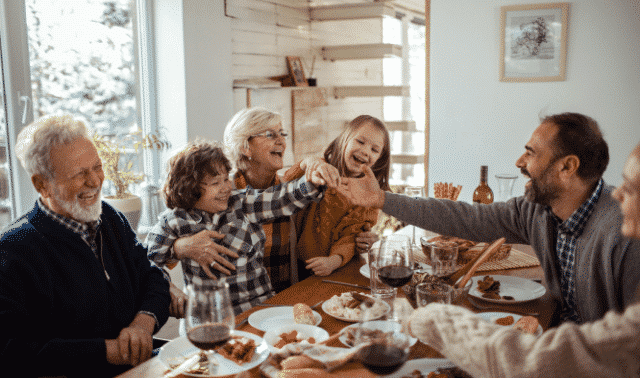Sign up for the Family Tree Newsletter! Plus, you’ll receive our 10 Essential Genealogy Research Forms PDF as a special thank you.
Get Your Free Genealogy Forms
"*" indicates required fields
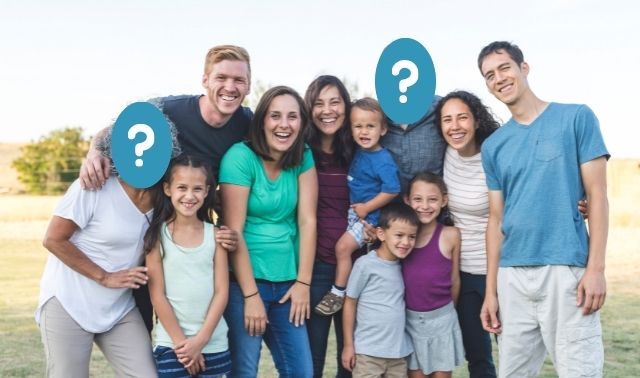
I’d been attending my in-laws’ annual family reunion for eight years when my mother decided to tag along. She’d heard plenty about the fun-loving Risers and their famous potluck dinners.
Almost immediately she met one of my favorite relatives. “That sweet Uncle Billy!” my mom exclaimed when she returned. I smiled proudly. “Did you know he’s raised his granddaughter since she was a baby?”
“Um … sure, I knew that,” I said, trying to remember.
“Now, which Riser sibling does he come through again?” she asked. “There were six of them, right?”
“I think so,” I faltered, “but I’m not sure which one Billy belongs to.”
“How could you not know?” she scolded. Then she was off to meet someone else.
All weekend my mom ferreted out family tales and retold them to me. “Why don’t you know these stories yet?” she finally burst out in exasperation. “And for heaven’s sake, why aren’t you writing this down?”
That weekend, Mom whacked me over the head with this truth: Every family gathering holds a mother lode of family information just waiting to be mined by genealogical gold diggers like you. Try these six ideas at your family gatherings, and you’ll build a family history inheritance that’ll be treasured for generations.
Gather photos, documents and other mementos
A family reunion is the perfect place to gather photos and documents you may not otherwise get to see. After all, some relatives aren’t eager to lend their priceless memorabilia (or even make copies). But if they’ll bring the items to the reunion to display, you can copy or photograph them without having to beg, borrow or steal.
How do you make it happen? Give relatives advance notice, advises Tom Ninkovich, author of Family Reunion Handbook: A Complete Guide for Reunion Planners (Betterway Books). Announce in a mailer what you’re looking for: “Ask for old Bibles, journals, wills, letters, birth and death certificates, newspaper clippings, old genealogies, church records, old photos, military records, naturalization papers, marriage certificates.”
This requires cooperation with the reunion planner (if it isn’t you) and a flair for getting the word out early and often. Consider asking certain relatives to bring specific items, such as getting Aunt Sue to bring your dad’s adorable first-day-of-school picture. Advertise prizes for the funniest photo, the most unusual family heirloom, or the oldest document.
Once you get to the reunion, collect everyone’s memorabilia for a display. Identify each person’s mementos, and fill out our free Artifacts and Heirlooms form while you’re at it.
Worried about security? “Place heavy [clear] plastic over everything on the table and tape the edges to the underside,” Ninkovich advises.
Do your copying during the reunion, between events or after hours. Use a portable photocopier or laptop and scanner to copy images. Work carefully with fragile documents—you might want to have the owners handle them. For instant “photocopying,” keep a digital camera handy, preferably one with a macro lens for capturing close-ups.
Family reunion planner Sandra Eminger of Cleveland makes specific memorabilia requests for her annual family gatherings. In 2008, she requested Easter pictures to go along with her reunion’s Easter theme. “They could be from last year or many years ago,” Eminger says. “It didn’t matter—we just wanted to see their pictures.”
Eminger prepared a poster board with acid-free photo corners. Relatives posted pictures as they arrived. Old black-and-white snapshots hung alongside recent glossies of cute kids in spring dresses. A relative copied and captioned the pictures for a family history album.
“These pictures were great because the larger family had never seen them,” she says. “I mean, who actually mails their Easter pictures to the rest of the family?” Eminger has already put the word out for this year’s Christmas-themed reunion: bring pictures with Santa.
Use games to collect genealogical data
Involving everyone in your genealogy quest can be fun, especially if you allow relatives to strike it rich by winning prizes. These tried-and-true games and activities can help you update basic data, identify old photos and gather stories.
First, update relatives’ vital statistics. “This goes a long way to having complete information for future generations,” says Edith Wagner, author of The Family Reunion Sourcebook (Lowell House) and editor of Reunions magazine. “Births, deaths and weddings should be easy to update.”
Hand out blank family group sheets or pedigree charts, depending on what data you need. Enter those who complete their forms into a prize drawing. This is a great icebreaker if attendees collect signatures of relatives who are present to verify information—and the person with the most autographs wins a prize.
A blank wall chart also can be fun to fill in as a group. At the most recent Riser reunion, we posted a construction- paper family tree with the six siblings on branches and their parents’ initials carved into the trunk. Relatives from each branch cheered each other on as they filled out the 176 leaves. You can reward the fastest-sprouting branch with a bag of candy.
Photo games
Games that focus on photos are also great reunion activities. One year our family numbered and displayed old pictures. Attendees wrote details about as many photos as they wished, each on a separate index card. Each card counted as an entry for a gift card drawing. By the end of the contest, nearly every photo had been identified several times over.
A more interactive photo game is Name that Picture. Project images onto a blank wall, turn on a video or tape recorder, and toss treats to relatives who call out what they know about each picture or its subjects. (Just don’t throw hard candy when the lights are off.)
Finally, try a game that encourages storytelling. Whose Story Is It, Anyway? requires some preparation but can be highly entertaining. Choose a favorite family tale, such as a childhood escapade or memorable vacation. Ask others to write the story as they recall it. Read each version aloud and have relatives guess who told which version. Award prizes for the group’s favorite version—and keep the stories.
You might also bring along the board game LifeStories (TaliCor). Two to eight players swap memories as they advance around a game board. Cards guide the topics, such as “Describe one of your favorite childhood toys or games.” Players can opt out of questions they don’t wish to answer by thumb-wrestling another player. Get a game going and quietly take notes.
Need more ideas? Many reunion books and websites have ideas for trivia and memory games, scavenger hunts, bingo, skits, quizzes, game shows and charades. Tweak those ideas to collect as much family information as possible.
Conduct family history interviews
When you see Grand-aunt Rachel only at the annual picnic, it’s logical to conduct a family history interview there. But how does a formal interview fit into a reunion setting, where fun, games and food rule?
Donna Beasley describes how it works for her in The Family Reunion Planner (Macmillan). “Doing an interview at an outdoor picnic does have its challenges. I set up a table away from the reunion site. [But] I had to ask the DJ not to play music for 30 minutes.”
Your interviews can be as informal as setting up a camcorder and inviting relatives over for a chat. You might even tempt them with comfortable chairs, a bowl of M&Ms or cold beverages—whatever looks inviting.
If family members aren’t easily persuaded to go on camera, try another approach. “Some won’t do it alone, but will do it in a two- or three-person group setting,” Beasley writes. “So you may get a husband and wife, or two brothers to interview together. Once they start traveling down memory lane, one person’s comments will spark the thoughts of the other to create a wonderful session.”
If you don’t have a video camera, a voice recorder or recording app will work for your interviews. As a backup, jot notes on our Oral History Interview Record.
For cousins who clam up in front of a camera, capture memories in casual conversation. Engage shy relatives one-on-one: Listen, ask questions and write down their responses later or ask permission to take notes.
A time-intensive but rewarding project is to mark your genealogy questions on a current draft of your family history book or genealogy charts, then walk around your reunion with it.
This method has worked best for me when I keep questions short and don’t carry a pile of papers that might distract or intimidate relatives. But I have used specific visual aids—a photo or a partially completed chart—to pique interest in my cause. “Who are the kids in this picture?” I might ask. Or “Can you help me fill in these three blanks about your mother?”
In Family Reunion Handbook, Ninkovich summarizes his method this way: “Create lists of what you need, question those who might know, record what you find out and, most important, document your sources.”
Donna Beasley recommends the one-on-one approach in The Family Reunion Planner as well. “Take notes as you go along,” she says. “Once you talk to several people, you’ll have an idea of who are the most knowledgeable members of the family.” Later, try to arrange more in-depth interviews with these people.
Think you’ll need assistance? Outgoing youngsters may be willing to help you make the rounds. Give them specific tasks: “Ask people to write their names and dates of birth here,” or “Ask Grandma to write the name of her high school and graduation date on this index card.”
Even with helpers, Ninkovich recognizes that the one-on-one approach it isn’t always practical. “If the reunion is so large that you cannot personally interview everyone,” he advises, “make a fact-gathering chart that people can fill in at their leisure.”
Document the event for future family historians
Alexis Debaltzo is a reunion planner and heritage scrapbooker for the Duker family of Hawaii. She sees their regular reunion as a vital part of her larger family history and documents it accordingly. “We have a unique history of more than 30 years of reunions,” she says. “I like everyone to realize they are part of something much bigger than just a family picnic.”
Each year Debaltzo asks the best family photographers to take pictures throughout the week. “I choose people from different branches of the family so we can be sure to have an overall perspective,” she says. After each reunion, she puts her scrapbooking talents to work. Her digital albums, made with StoryBook Creator Plus software from Creative Memories, recount each year’s highlights in words and photos.
Debaltzo shares the latest reunion albums and a heritage album each year, effectively providing new family fun while celebrating the past. “The albums stay in the main room of the house or hotel throughout the week. Everyone enjoys seeing their mom or dad as kids and teenagers.” Because the books are digitally created, relatives can even order their own copies.
You don’t have to be an expert photographer or scrapbooker to document your family’s reunion. Take a tip from Debaltzo: Ask the best picture-takers to share their shots with you. Keep photos in an archival album that has space for you to write notes next to each image. You might even encourage relatives to jot down their own memories on index cards to slide into the photo sleeves.
Want to capture the everyday lives of your relatives? Try This is Our Life, an activity described in Wagner’s Family Reunion Sourcebook. Photos about daily life are gathered from each family on topics such as home, yard, activities, sports, hobbies and pets. A display made from the photos helps everyone catch up—great for far-flung kin.
Plan a group genealogy activity
If you get lucky (or if you’re in charge of activities), you can actually plan genealogy as a reunion activity, or even arrange a small reunion focused on family history research. But before you start daydreaming about doing genealogy with your grandkids or grandparents, take a hard look at your family’s research needs, interests and resources.
First, what information are you lacking? Cemetery records? Basic data on an entire line? Photos of the old hometown? Parish records such as marriages, baptisms and deaths?
Second, who would be interested in gathering this kind of information? Does your clan have any tech-savvy teenagers? Families who could help make gravestone rubbings? Photography buffs who can capture images of your ancestral hometown? Individuals with interviewing aptitude? Folks with enough genealogy interest to dig around in church registers for a day?
Finally, find a place where your group could gather to accomplish your goals. A local Family History Center (you’ll find a directory of locations here) might be a good spot to host an evening’s online genealogy scavenger hunt. If the family hometown is within reach of potential attendees, photography and cemetery excursions might be practical. Where several family members live near each other, interviewing sessions might be your best bet. And a dedicated duo of cousins might be sufficient to tackle the parish records.
As with most events, planning is the key to successful group genealogy excursions. “This may mean scheduling library time, interviewing time, touring time, etc.,” advises Ninkovich in Family Reunion Handbook.
“Your plans should be flexible,” Ninkovich says. “For instance, if people doing research in the library don’t want to quit, they should be able to continue as long as they want. But … plan some rest and recreation to give people a break.”
Enjoy the event
Speaking of breaks, it’s important to plan some for yourself. Don’t focus so much on filling out charts that you completely miss hanging out with family. It’s also important to avoid turning every conversation into an interrogation, or fun-loving cousins might flee from you and your recording app.
“This is a busy time for all attendees, and you don’t want to distract them from the fun too long,” Beasley reminds readers in The Family Reunion Planner. In other words, your interest in deceased relatives shouldn’t interfere with family relationships in the here and now.
That said, reunion planners are pretty unanimous in agreeing that part of the purpose of a reunion is to honor those who’ve gone before us. “An eager genealogist should be turned loose to gather as much as he or she can,” says Reunions magazine editor Wagner.
And don’t forget to share the wealth you gather at a reunion, reminds Wagner. “You have a captive and appreciative audience. It’s a perfect opportunity to introduce the young generations to their ancestors.”
However you approach your genealogical gold-digging, remember these three rules: Prepare activities in advance, coordinate with reunion planners and keep an eye on the fun factor. After the get-together’s over, you’ll be sure to come home with some real treasures.

